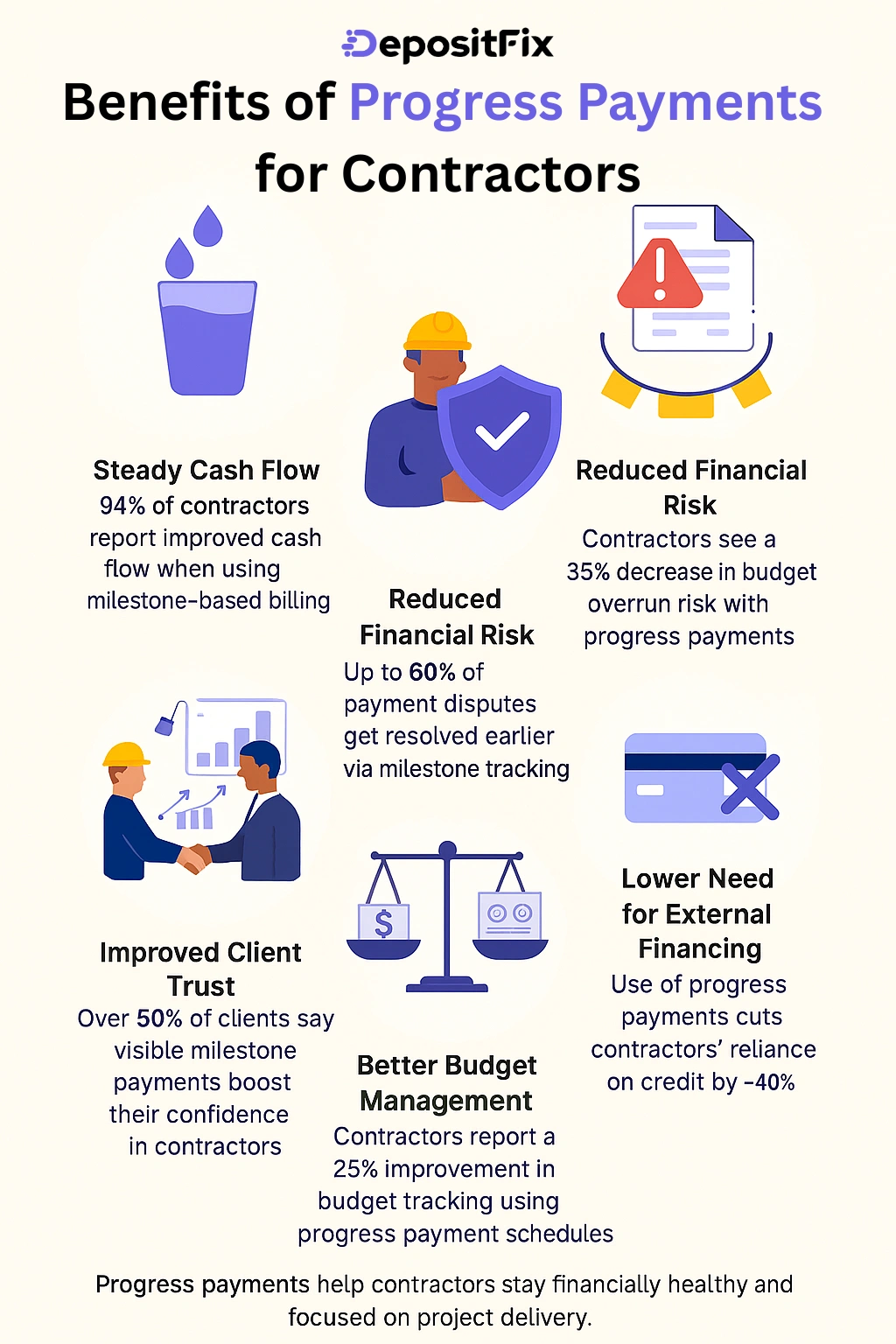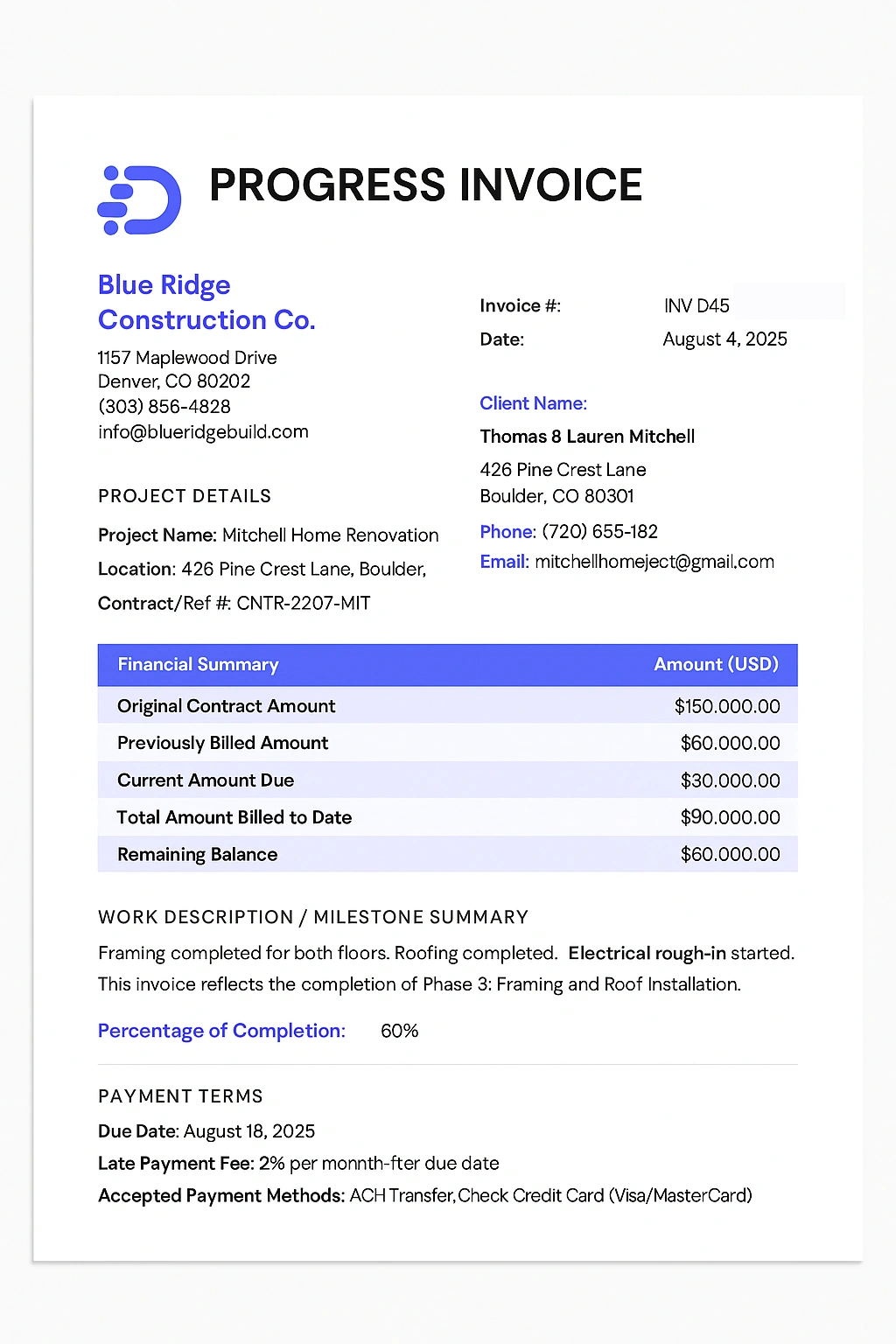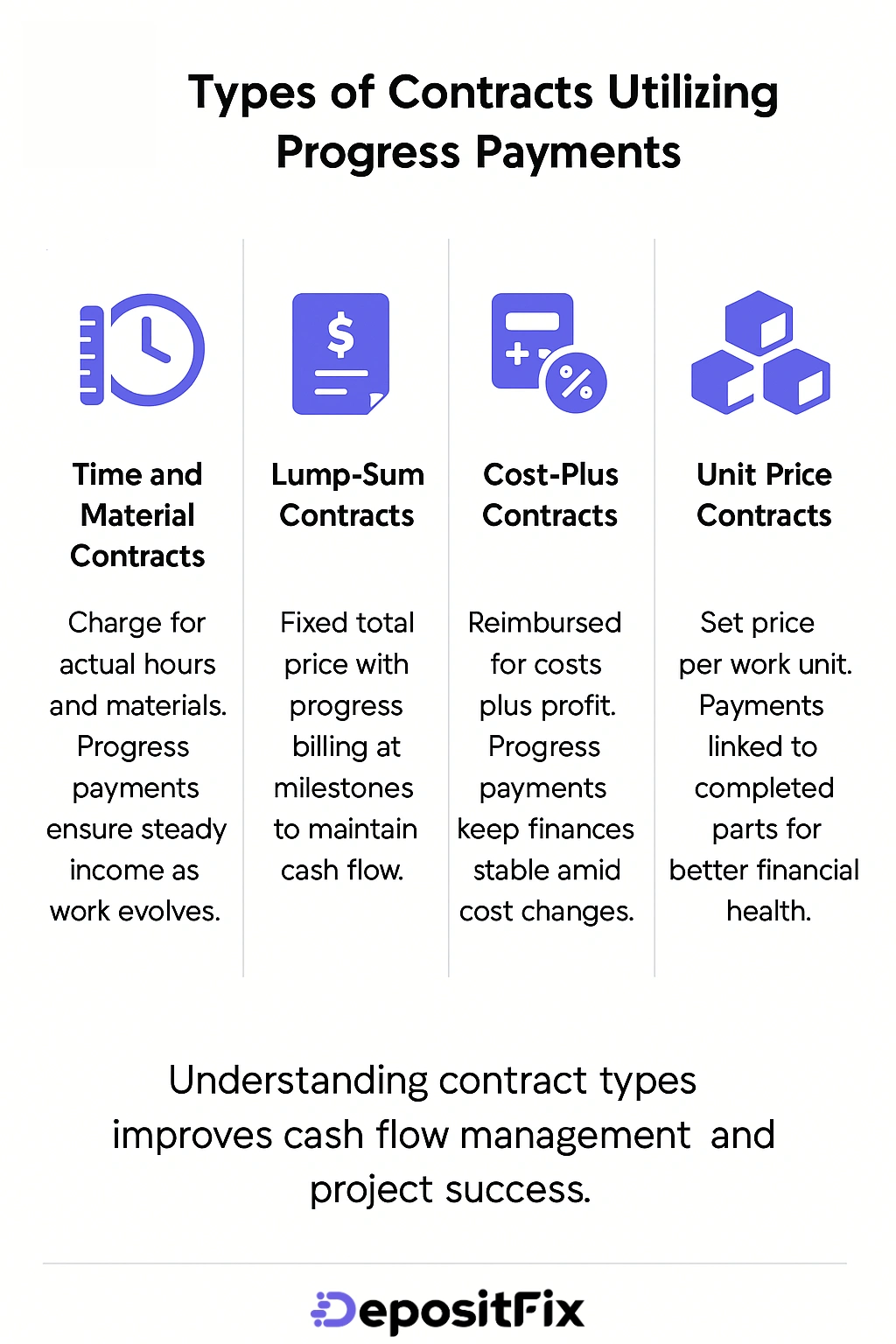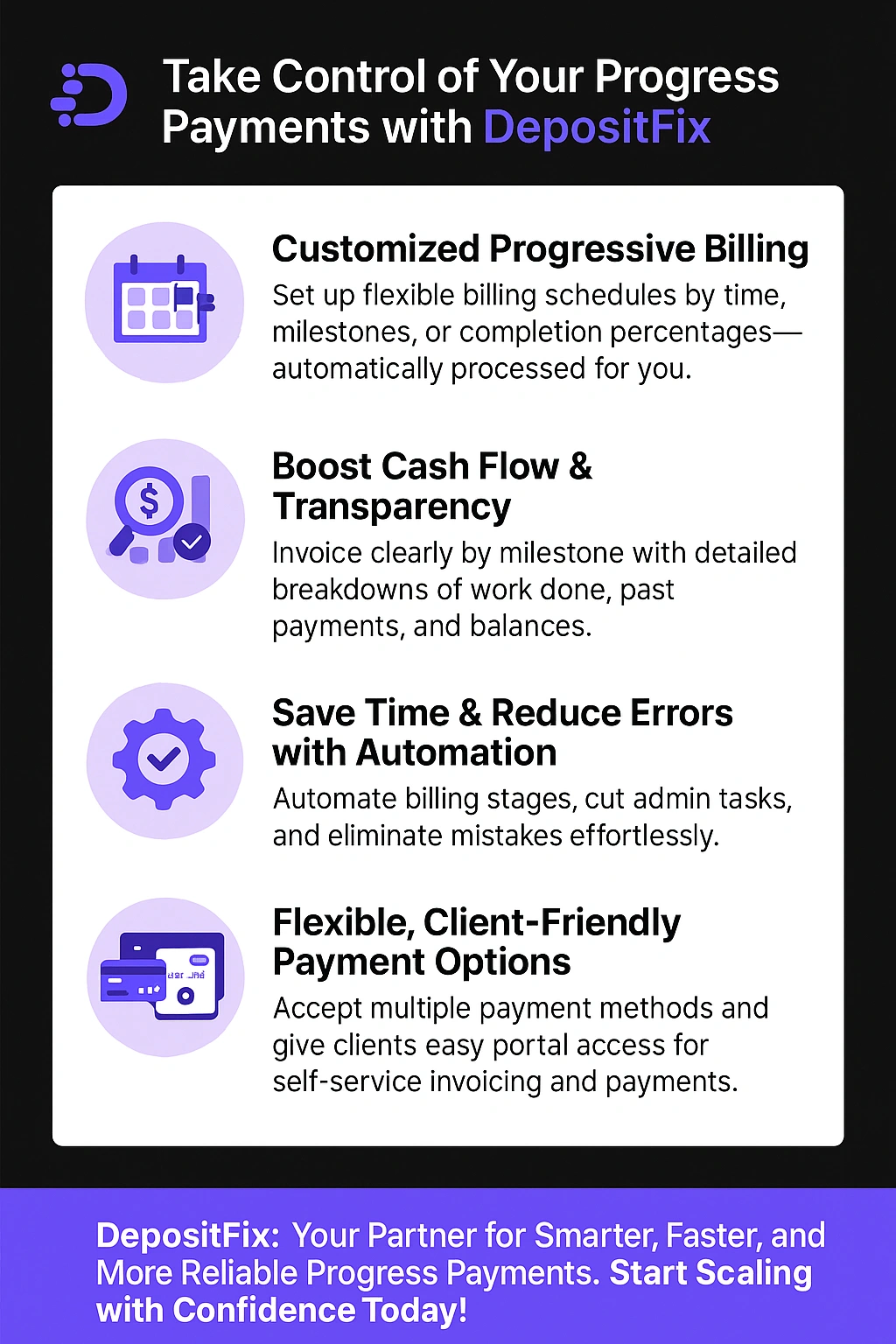Progress payment allows contractors to receive payments at different stages as work is completed. This payment method helps maintain steady cash flow, reduces financial risks, and keeps projects moving smoothly, as it aligns payments with visible progress.
Progress payments happen as work is done on a project. They help manage money for contractors, making projects run smoother.
Knowing about progress payments helps with cash flow. It also makes projects better.
Progress payments are when contractors get money at different project stages. This way, you can pay for work and materials as you go. It helps avoid waiting for one big payment at the end.
Using progress payments helps keep work going without money worries.
Progress payments give contractors the money they need to keep working. This way, projects stay on schedule.
They also make it clear how money is spent. Contractors and clients can see how things are going together.
Progress payments follow a structured process that ensures contractors receive payments tied to the completion of specific project stages. This approach aligns cash flow with actual work progress, giving both contractors and clients transparency and control over the financial side of the project. Typically, the process starts with defining milestones in the contract and continues through to the final payment upon project completion.
The main steps in the progress payment process include:

Progress payments provide contractors with a more stable financial foundation throughout a project, reducing risk and supporting better project management. By linking payments to specific milestones, contractors can maintain healthy cash flow, reduce dependence on credit, and strengthen relationships with clients through transparency.
Key benefits include:

Creating a clear progress payment schedule ensures everyone knows what to expect, building trust and paving the way for a successful project.
Your payment schedule should have important parts for everyone to agree on payment times and rules. Key parts include:
With these parts clearly set, both sides understand the payment process better. This makes the project run smoother from start to finish.
Even with a payment schedule, being flexible is key. Projects can face surprises that change plans and timelines. Having backup plans in your schedule helps you and your clients adjust to these changes.
Backup plans might include:
Being ready for unexpected problems keeps money flowing and the project moving. A solid payment schedule with backup plans builds trust and reliability in your work with clients.

Each contract type uses progress payments in its own way. This meets different project needs and financial setups. Knowing these helps manage money flow and expectations better.
Time and material contracts let you charge for actual hours and materials used. This is great for projects with changing scopes. Progress payments help you get steady income as the project grows, matching costs with work done.
Lump-sum contracts have a fixed price agreed on before starting. For big projects, progress billing lets you get paid at different stages. This keeps cash flowing and sets clear financial plans for both sides.
Cost-plus contracts pay you back for actual costs plus a profit margin. Progress payments help keep your finances stable as costs change. This makes it clear to clients why you're spending money.
Unit price contracts have a set price for each unit of work. This lets you divide work into easy-to-measure parts. As each part is done, you get paid, linking work to payment for better financial health.

Payment applications let contractors ask for payment for the work done. This keeps cash flow steady and makes sure they get paid on time.
Using standard forms for payment apps makes billing easier and clearer. Forms like AIA G702 and ConsensusDocs 710 have a set structure. They ask for the project name, who the contractor is, and what work was done.
These forms help make requests clear for everyone. This is good for all involved.
What you include with payment apps can affect how fast you get paid. Contractors need to send in important documents. These include:
Having all the right documents is key. It proves your payment requests are valid. Well-prepared apps and documents help avoid delays and disputes. They also keep the workflow smooth and client relations strong.
Progress payments bring their own set of problems as well. One big issue is the extra work needed for paperwork and meeting deadlines. You might spend a lot of time on forms to make sure everything is correct. This can take your focus away from the main tasks of your project.
The paperwork for progress payments can be a lot to handle. You need to keep track of the work done, payment requests, and all the supporting documents. If you can't manage this well, it can slow down your payments. This can really hurt your cash flow.
Another problem is disagreements about how much work is done. Contractors and clients might have different views on this. These issues can make business relationships tense and slow down the money needed to keep working. Talk clearly and keep good records to solve these problems.
Managing progress payments effectively is crucial for the smooth financial flow of any construction project. Proper handling of these payments helps maintain good relationships between owners, contractors, and subcontractors, minimizes disputes, and keeps the project on schedule.
Here are some best practices for managing progress payments in construction projects:

Retainage is a common practice in the construction industry. It's a portion of payment withheld until the project's completion. This amount usually ranges from 5% to 10% of the contract value.
Understanding retainage practices is key. It ensures the quality and timely completion of work. But, it can also challenge contractors in managing cash flow.
Retainage acts as a financial safety net for project owners. It guarantees that contractors will fulfill their obligations. Yet, it can strain contractors' financial health.
Waiting until the end of a project to receive a payment can limit cash flow. This makes it hard to meet ongoing expenses or payroll.
Engaging in projects with retainage can affect cash flow. You might face delays in receiving funds. This can make it hard to finance future projects or cover unexpected costs.
Some contracts allow for partial retainage payments during the project. This can ease cash flow issues. Negotiate these terms to reduce the impact on progress payments. This helps in managing finances smoothly throughout the construction process.
A detailed payment schedule shows when payments are due at different stages. This ensures everyone knows what to expect, keeping the project running smoothly.
Here's a payment schedule for a typical home project. It breaks down the construction into phases and the payment percentages for each:
Sometimes, delays or changes happen, like bad weather or supply issues. Talk about these changes with everyone involved. Manage the payment schedule well to handle these issues. This keeps payments in line with the work done, building trust and cooperation.
The construction industry is changing fast, and progress payments are no exception. Technology is making billing processes smoother and more efficient. This change brings more transparency and better project management.
Software helps track project progress and payment requests in real-time. This cuts down on disputes because everyone has the latest financial info.
Cloud-based systems also help teams work together better. They make communication clear and improve project flow.
Market practices are shifting, focusing more on standard payment applications. Expect clearer project contracts upfront to avoid conflicts. This makes the payment process smoother and improves cash flow.
Keeping up with these changes will help you stay ahead. It ensures your projects run smoothly and efficiently.
Take control of your progress payments with DepositFix’s Progressive Billing, designed especially for contractors facing milestone-based work. Set up customized billing schedules, whether based on time, specific project checkpoints, or completion percentages, and let DepositFix automatically process payments at each stage, reducing your administrative overhead and keeping cash flow steady. This system supports flexible installment options through credit cards, ACH, and more, while keeping clients informed via automated reminders and receipts.
Key benefits include:
DepositFix gives you strategic control and clear visibility into your billing, freeing you to focus on delivering quality work, payment tracking and follow‑up are handled automatically. Book your free demo and take control of your payments today!

When you pay for work as it's done, you manage your money better and lower risks. This approach also helps you talk better with clients, keeping everyone updated.
Progress payments help everyone in a construction project. They make managing money and time easier. Remember these tips to keep your projects running smoothly.
Using the strategies from this guide will help you handle project money well. Progress payments make sure you get paid on time. They also help your construction projects succeed.
Discover the hidden automation in your payment, billing and invoicing workflows. Talk to our experts for a free assement!
